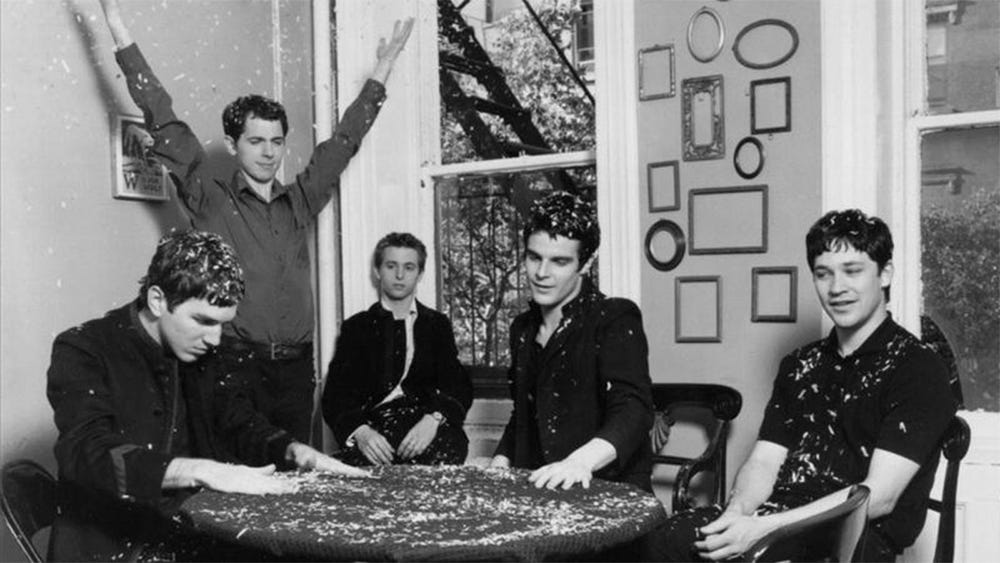Colin Nagy | July 17, 2025
The Jonathan Fire*Eater Edition
On nineties New York and the perils of being the template.
Colin here. In late 90’s New York City, rock music felt stagnant. TV and the radio was, at best, dominated by stuff like Deftones and Blink-182.
Why is this interesting?
A small band of prep school friends from Washington D.C. arrived in Manhattan with something different. Jonathan Fire*Eater formed in 1993, when Stewart Lupton, Walter Martin, Matt Barrick, Paul Maroon, and Tom Frank retitled their previous band, The Ignobles, to start something different.
As Lizzy Goodman documented in her great book Meet Me In The Bathroom, the rock scene was suffering a cultural recession after the grunge of the early 1990s, but Jonathan Fire*Eater was one of the few signs of life. Record companies took note, and a bidding war for the group began, culminating with their signing to David Geffen's new DreamWorks label.
The band opened for Blur and Pulp, modeled for Calvin Klein, and seemed poised for stardom. But personal tensions, Lupton's heroin addiction, and the weight of industry expectations led to their implosion in 1998.
The band continued, however, to be cited as an influence by a lot of the bands hanging around the East Village at the time (RIP Black and White!) including Interpol, The Strokes, and the Yeah Yeah Yeahs.
Their short lifespan created a template that would define New York indie rock for the next decade (coinciding, as it happens, with my years at NYU). They weren't just a footnote to the more famous bands that followed, but a crucial first chapter of a story that finally threw some kerosene on the fire of American rock.
As Goodman details, Lupton pioneered the kind of downtown scene-making that would become essential to indie rock success:
“He was the one out there pushing Jonathan Fire*Eater to the members of that society, even as he and the rest of the band spent their days living in a trash-strewn, single-room apartment." Lupton stayed out later than anyone, befriending people like Elliott Smith and Rufus Wainwright, rallying excitement for the group through old-fashioned word of mouth. This approach to cultivating cultural capital would become the playbook for countless indie bands, from The Strokes' carefully constructed mystique to the Yeah Yeah Yeahs' art world connections.
The sound channeled the raucous energy of the Cramps and the Stooges, with some Mick swagger. They combined the artiness of post-punk with the straightforward heft of garage rock, creating a sound that was simultaneously retro and futuristic. People like Karen O (of Yeah Yeah Yeah’s fame) also took notice.
By the time of their major label deal, Lupton's heroin addiction had begun to alienate him from the rest of the band: "They resented the f*ck out of me for it. They still do," Lupton admitted to Goodman. Their story became a cautionary tale about the perils of hype and hedonism, and it haunted every band that followed. (All was not lost, however. Three other members of the band went on to form the Walkmen.)
The Strokes' Julian Casablancas and Albert Hammond Jr. would grapple with similar demons; Interpol's Paul Banks would channel that same romantic melancholy into darkly shimmering post-punk anthems.
As The Strokes' Nick Valensi acknowledged to Goodman, people used to tell him that his band was finally delivering on the promise of Jonathan Fire*Eater. It’s another sad reminder that sometimes, the most important cultural contributions come from those who burn brightest and briefest, leaving behind just some graph paper for others to draw on in the future. (CJN)
